For centuries, the legend of the Amazons have captivated people’s imagination. Seductive images of beautiful warriors in shining, armored brassieres have moved from being mythological tales to being part of computer games and cinema. Until now, most historians have been convinced that the Amazons were as mythical as dragons and griffins, but recent archaeological research, however, compels us to reconsider this ancient myth.
For a long time, Western European science underestimated pre-Christian mythology, partly due to Christianity’s dismissal of ‘pagan fables’. It was only in the first half of the twentieth that the study of myths began to take on the characteristics of a real academic discipline. And yet even today, we often encounter superficial interpretations that distort, rather than enhance, our understanding of the lives and thoughts of the ancients.
The myth of the Amazons—female warriors who fought alongside men—has long faced fierce and unnecessary criticism. It may seem that nothing could prevent such a community from coming into existence, especially considering that even today, there are girls who pursue military careers. But the stereotype of rigid gender roles, believed to be intrinsic to all ancient warrior societies, consistently overshadowed genuine curiosity, with its subtle, suggestive whispering: could this, have in fact, been true?
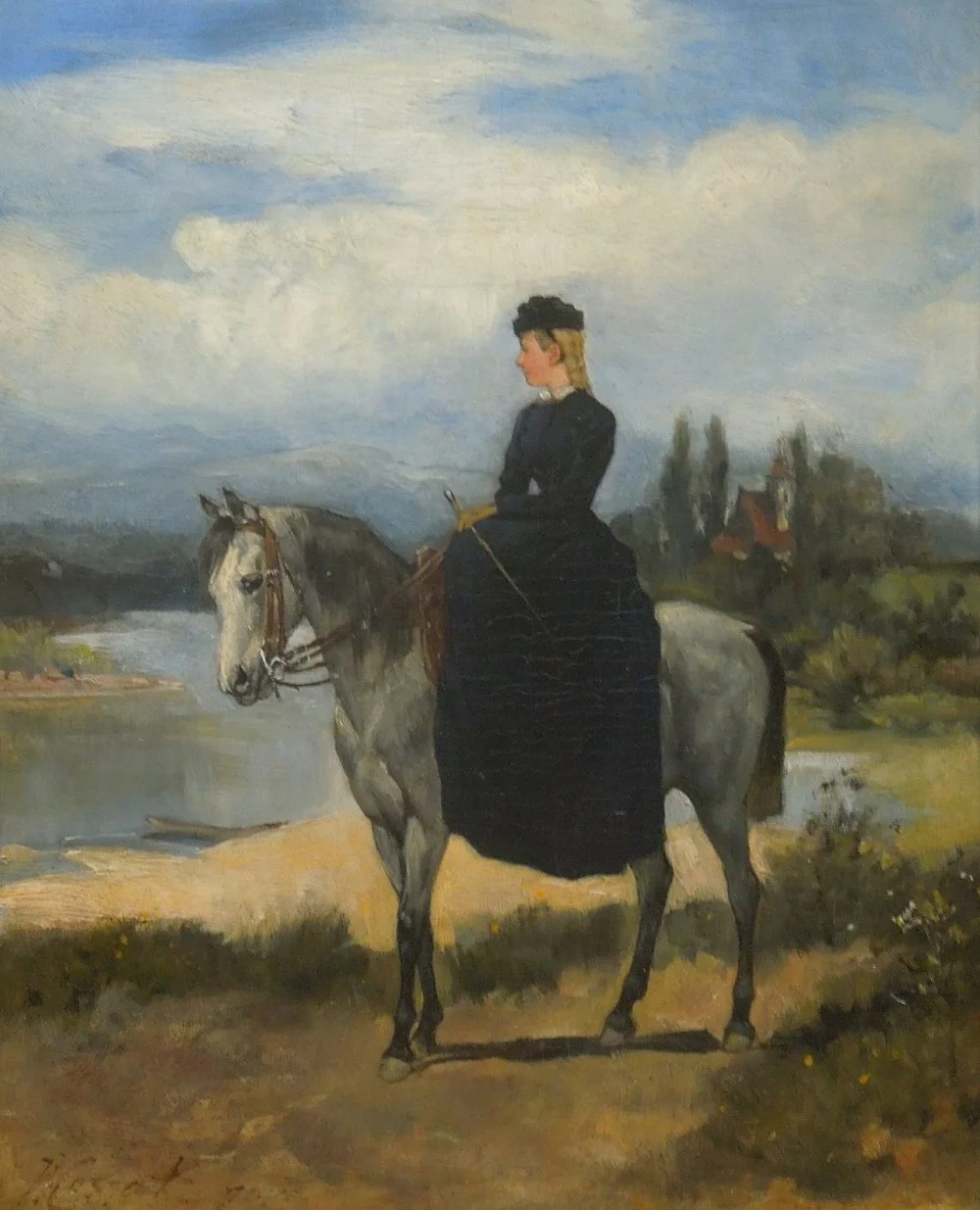
Juliusz Kossak, An amazon, 1878/Wikimedia Commons
Some historians have argued that the Greeks mistook certain male barbarian warriors for women. But this idea is unlikely—even a child would find it hard to be deceived by this because there are always corpses after any battle, and Greek military customs required the gathering of trophies from the defeated. Stripping weapons and equipment from fallen enemies would naturally reveal their gender.
Other researchers believed that the Amazons were purely symbolic figures, akin to centaursi
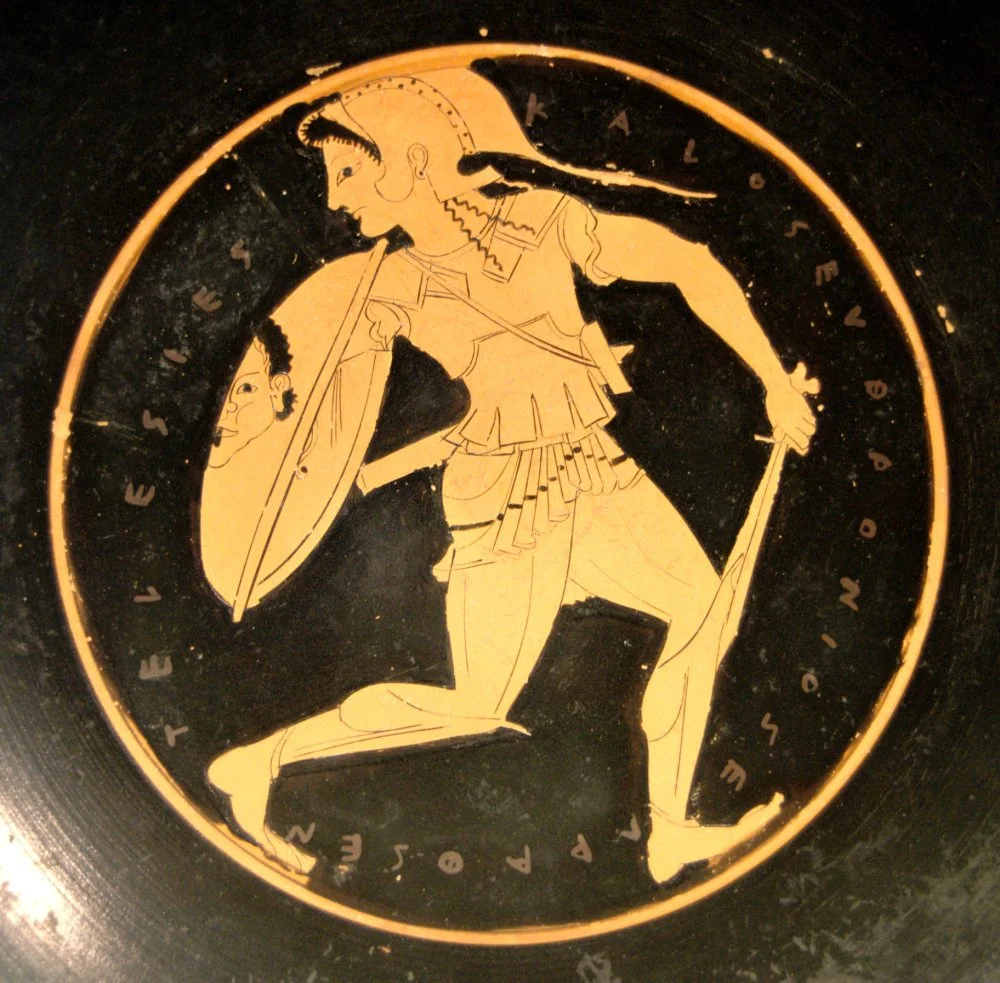
Fleeing Amazon. 510–500 BC./Wikimedia Commons
In the early twenty-first century, we are finally beginning to recognize a historical fact: among the Iranian peoples of Eurasia, female warrior communities did indeed exist, and echoes of this tradition survived at least until the Middle Ages. However, mere recognition doesn't automatically lead to understanding, nor does it unravel the mysteries of these myths. We should explore which elements of these myths are based on historical facts, which underwent mystical reinterpretations, and which are mere distortions.
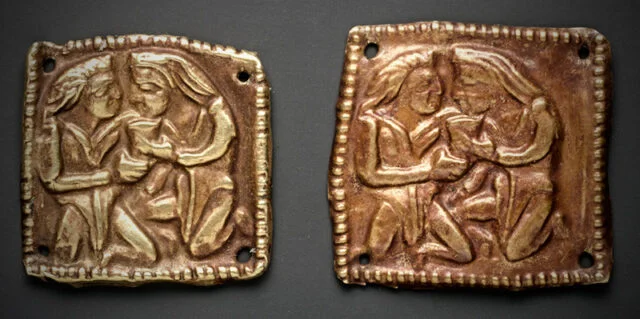
Gold plaques showing Scythians drinking. /The State Hermitage Museum, St Petersburg, 2017. Photo: V Terebenin
A world that dismisses Amazons as mere fairy tales denies not only a woman's right to bear arms but also the existence of a vast and diverse range of social structures and organizational forms. Conversely, a world where discussions about Amazons can be taken seriously is one ready to embrace and acknowledge its own cultural diversity.
Between Reality and Myth
The Greek tradition about the Amazons isn't a single, cohesive collection of stories but rather a varied and contradictory tapestry of numerous tales and fragments. These can be categorized into two parts: the symbolic, metaphorical legends passed down to us in poetic works and the more grounded ethnographic descriptions left by ancient historians. However, facts often intertwine with legend, making it challenging to discern one from the other.
Not too long ago, the entire history of the Trojan Wari
While the main narrative of the "Iliad" doesn't include clashes between Greeks and Amazons, one of The King of Troy, Priam's monologues, references a battle between Amazons and Phrygians. Homer also mentions the tomb of the Amazon queen, "Swift Mirina." In another passage, there's a passing mention of the victory achieved by the hero Bellerophon over an army of Amazons: in his first feat, he slays the monstrous Chimera with the head of a lion, the body of a dragon, and the hindquarters of a goat.

Copy after original by Phidias. Head is a copy from Polyclitus' original. Amazzone ferita - Musei Capitolini. Statue of the Wounded Amazon of the Capitol-Mattei type. Marble/Wikimedia Commons
"After the war, he went to the Solymi, a renowned people ... In his third feat, he vanquished the man-like Amazons."
This passage notably differs from the first two rather mundane mentions: it possesses all the characteristics of a heroic legend, where the Amazons and the Solymi—one of the indigenous peoples of Asia Minor—are placed on par with fantastical creatures. In other words, even during Homer's time, the Greeks perceived the Amazons twofold: as a somewhat real community, one of the bright spots on the diverse map of surrounding tribes and peoples, yet also as an existential adversary, powerful and monstrous.
This duality persisted throughout the entire ancient era. The myth of the Amazons remained popular, and later authors have transmitted its details to us. The Greeks considered Ares, the god of war, as the progenitor of the Amazons, who fell in love with the nymph Otrera. Several warrior daughters were born from this union, laying the foundation for the Amazonian lineage. They are directly or indirectly featured in almost all myths related to the formation of the Greek world: they fought alongside Heracles and Theseus, besieged Athens, and participated on the side of King Priam in the Trojan War. After Alexander the Great's Asian campaign,i
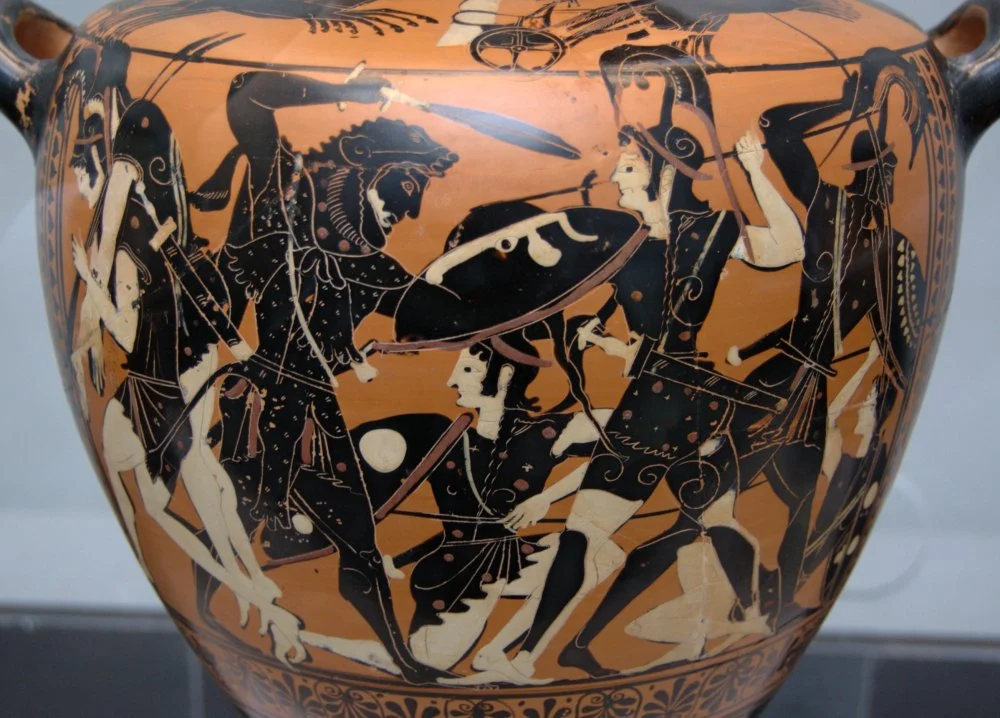
Heracles fighting the Amazons. Attic black-figure hydria, ca. 530 BC. From Vulci./Wikimedia Commons
At the same time, the Amazons frequently appear in the pages of entirely realistic works. The most famous of these is Herodotus'si
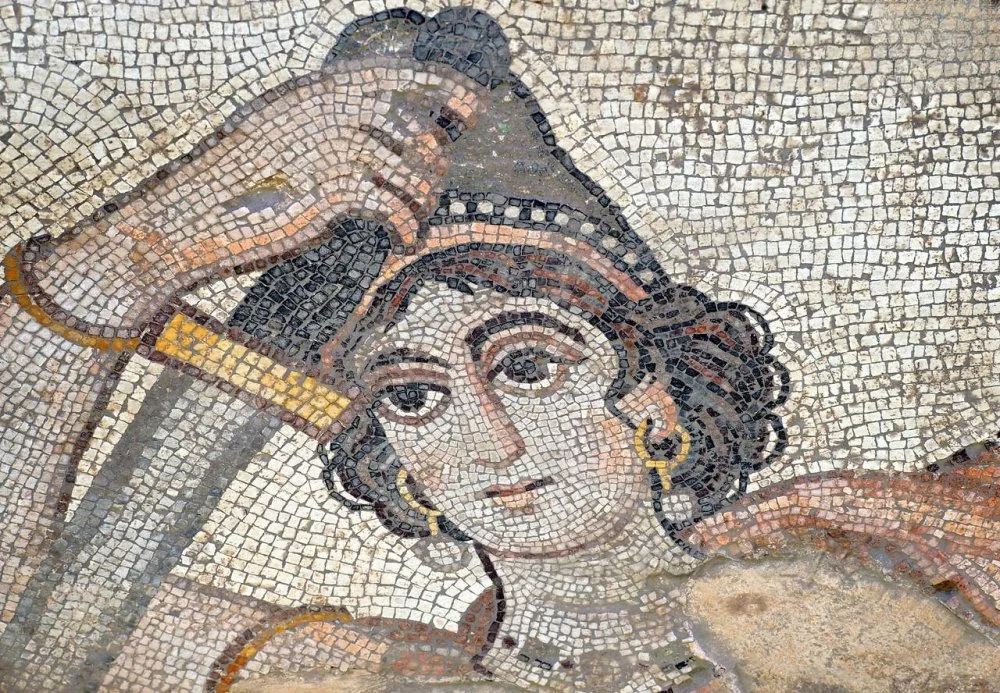
Hippolyte Amazon queen, dates from 5-6th century AD./Wikimedia Commons
War of the Worlds
To comprehend the role of the Amazons in the Greek psyche, one must also delve into the visual arts. In both sculpture and vase painting, they ranked among the most popular subjects, and following the Greco-Persian Wars, this popularity soared. Amazonomachy—a battle between Greek heroes and a host of Amazons—adorned the frieze of the Parthenon, Athens' principal temple. Scenes of mythical battles often graced sarcophagi: episodes from the Trojan War, the Olympian gods' struggle against giants, and, naturally, clashes between Greeks and courageous horsewomen clad in barbarian attire.
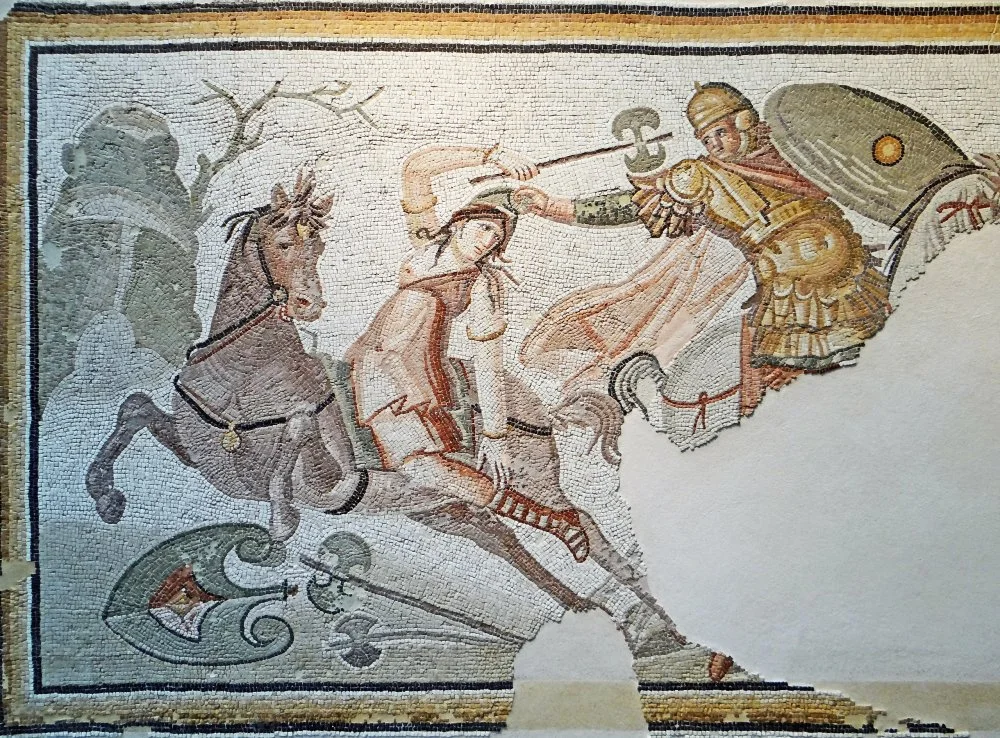
Ancient Roman mosaic: Amazon warrior armed with a labrys, engaged in combat with a hippeus, second half of the 4th century AD, Louvre/Wikimedia Commons
All these battles aren't merely captivating mythical events; they serve as symbols that ancient spectators used to comprehend the world's order and the evolution of Greek religion. Whether the battle of gods and giants, the Trojan War, or the Amazonomachy, they were phenomena of the same magnitude, albeit varying in scale. Observing global processes, the Greeks witnessed constant conflict—between cosmic forces, epochs, generations, cultures, and the diverse qualities of human nature. Within this unceasing struggle, there were victors and vanquished, but no unequivocally negative or positive characters. "War is the king of all, the father of all," said the philosopher Heraclitus,i
In this ceaseless turmoil of eternal struggle, which Greek culture deemed as the foundation of order, the Amazons represented absolute barbarism. Indeed, their image embodied everything deemed unacceptable in patriarchal Greek society. Ancient Athenian women lacked political rights, and their involvement in warfare was inconceivable. Spartan women, more emancipated, occasionally participated in state affairs, but their rights still didn’t match those imbued to men. A social structure where women held active roles was perceived by the Greeks as part of a topsy-turvy, upside-down world—or, more aptly, as an anti-world, hostile and destructive to their established order.
The conflict between Hellenism and barbarism, and between the Olympic religion and the cults of neighboring peoples, was likened to a "war of the sexes" between man and woman, where participation—whether spiritual or physical—was a mandatory test of valor. Therefore, after defeating the fearsome Chimera, another symbol of foreign beliefs, the Homeric hero Bellerophon had to confront the Amazons.
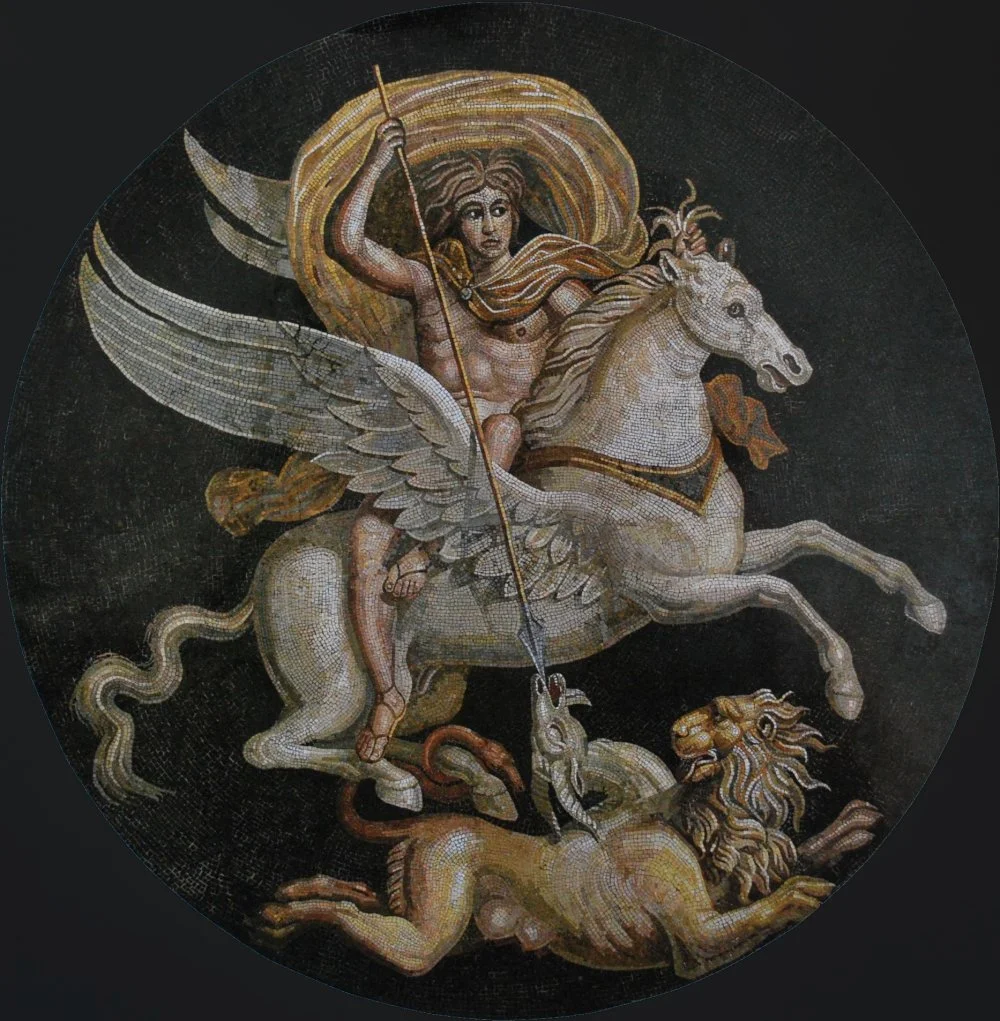
Bellerophon riding Pegasus and slaying the Chimera. Central medallion of a Roman mosaic, 2nd to 3rd century CE. Musée Rolin, Autun, France/Wikimedia Commons
Neverthelesss, the polytheistic worldview did not entail a categorically negative attitude towards opponents. While overcoming barbarian cults, the Greeks did not seek to completely eradicate them but rather reinterpreted and assimilated their elements. The Gorgon Medusa—an ancient Mediterranean goddess—transformed in Greek legends into a monster vanquished by the hero Perseus, yet her image continued to adorn temples, altars, household items, and jewelry. Now, she was assigned the role of a demonic protector, warding off evil. Trojan heroes—Priam, Hector, Sarpedon, and even the frivolous Paris—were revered just as much as mighty Achilles, wise Nestor, and cunning Odysseus. Even the Persians, who inflicted immense damage on Greek cities, were depicted with respect and a hint of sympathy. A similar fate befell the Amazons: in the flexible and tolerant worldview of the Greeks, there was a place not only for horror but also for admiration.

Carvaggio. Medusa. 1597/Wikimedia Commons
Where did the Amazons live, and what was the origin of their name?
The ancient authors' accounts of the homeland of the Amazons are contradictory: some claimed they lived on the eastern shores of the Aegean Sea, others said their territories were near the river Thermodon in northern present-day Turkey, and yet others placed their kingdom in the steppes of the North Black Sea region, inhabited by Scythians, Sarmatians, and many other nomadic herders known for their warlike nature. According to one version, there were even Libyani


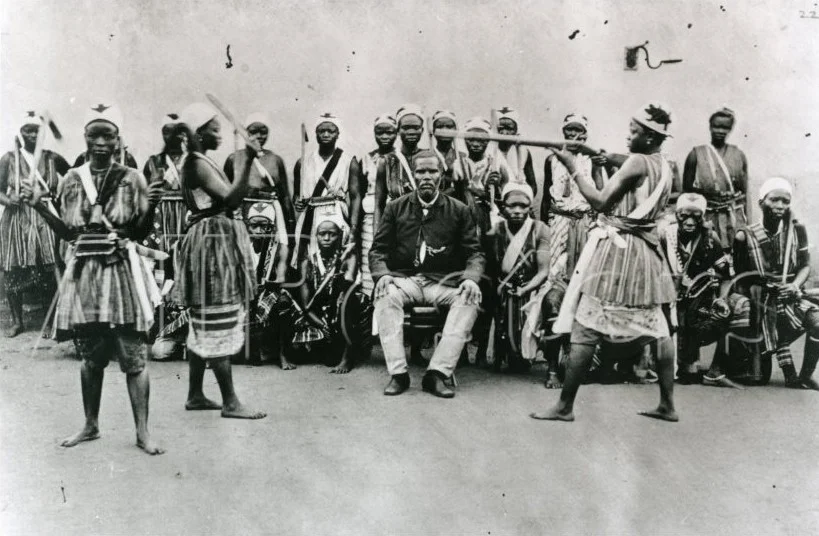
Dahomey amazon/Wikimedia Commons
The origin of the word "Amazons" is not definitively established, but the most compelling hypothesis at present is that it is a distorted form of the Iranian.i
Amazon Graves
The vague hints found in written sources wouldn't hold any scientific weight without tangible and measurable archaeological data. Burial monuments emerge as the primary source here: finds discovered during the excavation of dwellings, disconnected from their owners, and those from sanctuaries and temples require a special, religious interpretation, while depictions could be products of imagination. In a grave, a person appears before the researcher in all their nakedness, both biological and social. The only way to prove or refute the existence of female warriors is to study female burials in the relevant territories.

Leon Wyczółkowski. Kurgan in Ukraine, 1894/Wikimedia Commons
From the outset of their study, the necropolises of the steppe region of the Black Sea yielded rich material. To scholars and then to the wider public, treasures from the Melgunov burial mound, Chertomlyk, Kul-Oba, Solokha, and other burials of Scythian kings were revealed. From semi-mythical peoples that existed only on the pages of books, the Iranian tribes of the Eurasian steppe became real cultures—developed and unique, not primitive. As archaeology shifted away from mere "treasure hunting" toward a full-fledged science of humanity's material culture, attention began to be paid to ordinary burials. Occasionally, strange artifacts were found, like weaponry, in female graves. But drawing far-reaching conclusions from this was premature.
By now, extensive statistics have been compiled, vividly demonstrating that weapons found in the burials of Scythian, Sarmatian, and Sauromatian women are not random occurrences or exceptions but rather entirely traditional elements. For instance, in the necropolis of ancient Tanais,i

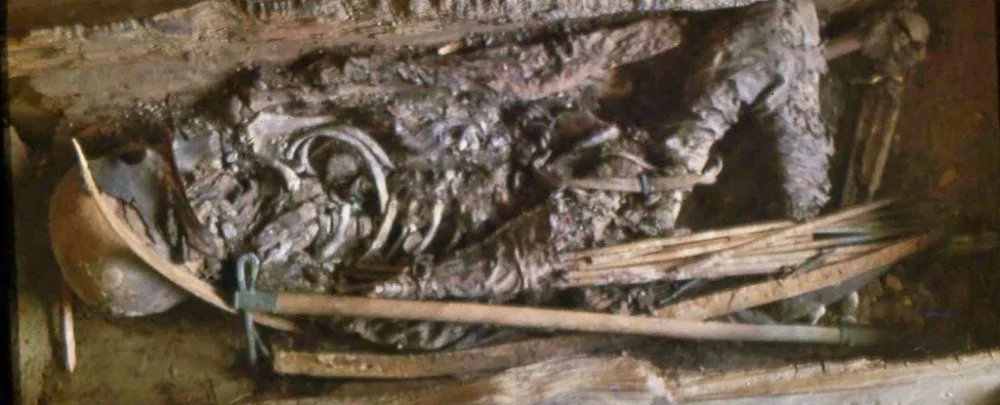
Burial of a Scythian 13-year-old girl with a gun. 7-5 centuries BC/Wikimedia commons
In the 1990s, a Russian-American expedition conducted excavations of the burial mounds Pokrovka-1 and Pokrovka-2, located in the southern Urals steppe near the Kazakhstan border. In total, about 180 Sauromatian and Sarmatian burials were excavated. About 75% of the female graves contained classic "housewife" attributes—mirrors, spindles, spinning wheels. Some of the rich burials clearly belonged to priestesses. However, 15% of women possessed weapons, and they seemingly began training in their use at a young age. In one of the graves, a sixteen-year-old girl was buried alongside an iron sword-akinak and forty arrowheads.4
During the excavation of mound No. 20 in the Khodny Yar tract on the right bank of the Dnieper, a grave was found, one look at which would have made any Greek's hair stand on end: there lay a noblewoman, at her feet, perpendicular to her body, lay the half-scorched skeleton of a man. Next to the woman were 47 arrowheads and the remnants of a quiver.5
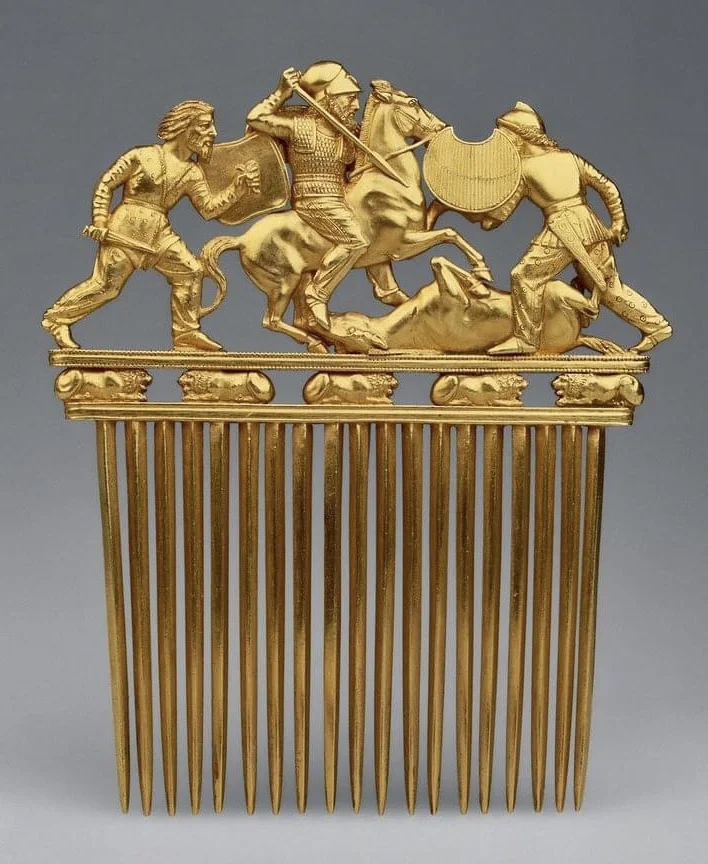
A golden comb from the Solokha mound. It was found in the burial of a Scythian leader. 5th-4th centuries BC/Wikimedia commons
Despite these discoveries, some Russian researchers still adhere to the stereotypical belief that they are unrelated to real military activities and are purely of a cultic nature. However, there is at least one reliable indication that distinguishes warrior’s graves from those of "civilians" : traces of combat injuries. Women buried in warrior tombs indeed exhibit characteristic fractures, cranial traumas, and arrowheads lodged in bones, and their joints are often deformed from horseback riding—much like male cavalrymen. All this evidence cannot simply be dismissed as a " beautiful, ancient custom."
Sea Valkyrie
Around the 11th century BCE, Persians— a union of Iranian-speaking tribes related to the Scythians and Sauromatians— migrated to the territory of present-day Iran. Coming into contact with the cultures of ancient eastern civilizations such as Babylon, Assyria, and Elam, the Persian nomads learned numerous sciences, arts, and crafts, mastered writing, and saw examples of developed states. In 550–530 BCE, the Persian king Cyrus the Great from the Achaemenid dynasty founded one of the most powerful empires of antiquity, which at its peak stretched from the shores of the Aegean Sea to India.
Modern pop culture often portrays Persian kings as despotic tyrants with sadistic tendencies, as seen in the depiction of Xerxes in the movie "300." However, the reality was quite different: the Achaemenids were educated and astute politicians. They adeptly balanced between strict rule and liberalism, refraining from imposing their worldview on conquered peoples and readily adopting their achievements. The culture of the Persian Empire was marked by its complexity and diverse traditions. Innovations and borrowings coexisted seamlessly with ancient customs, possibly originating from the Eurasian steppe, where female emancipation, uncommon in the East, may have begun. Persian women enjoyed freedoms such as the right to enter marriage by choice, they also could own land, conduct independent economic activities, travel alone, and have personal servants, whereas female members of the royal dynasty joined men in official receptions and, naturally, directly or indirectly managed some state affairs.

A scene from the movie “300”/Free sources
While it's possible that some notable Persian women dedicated their lives to military pursuits, such a group, if it existed, was likely small. However, Persian kings were not averse to the assistance of barbarian female warriors from other cultures. Among the closest allies of King Xerxes I was Artemisia, the ruler of Cariai
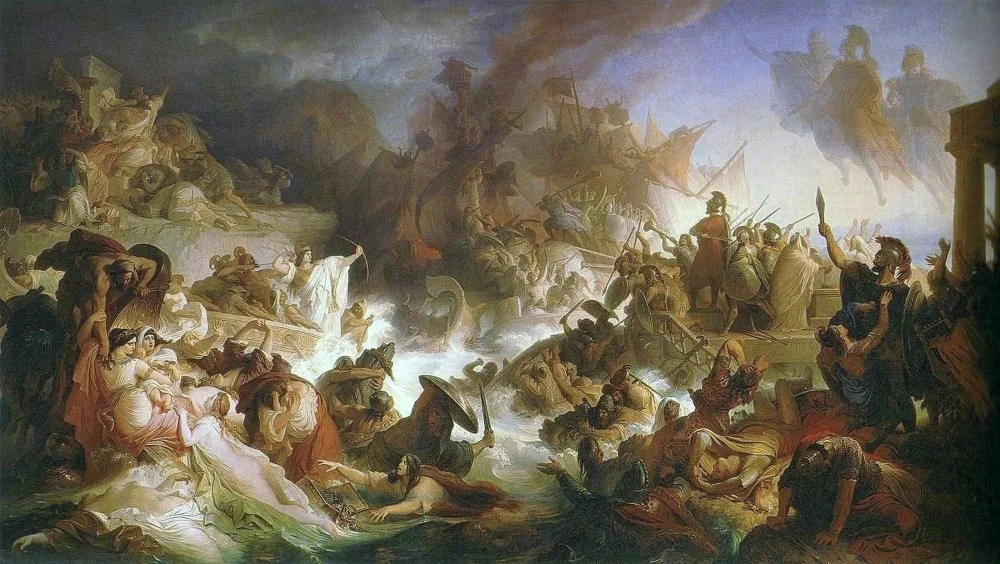
Wilhelm von Kaulbach. Battle of Salamis. 1868/Wikimedia Commons
Artemisia, with remarkable intelligence and a keen understanding of power dynamics, attempted in September 480 BC to dissuade the Persian ruler from engaging in a naval battle with the Greeks. However, Xerxes did not heed her advice. She was compelled to participate in the Battle of Salamis, where the Persian fleet suffered a devastating defeat at the hands of the Greeks. When the hopelessness of the situation became apparent, Artemisia ordered the lowering of Persian flags and rammed a passing allied ship. The Greeks assumed that Artemisia had defected to their side and refrained from attacking her. Thus, the queen saved her own life and that of her sailors.
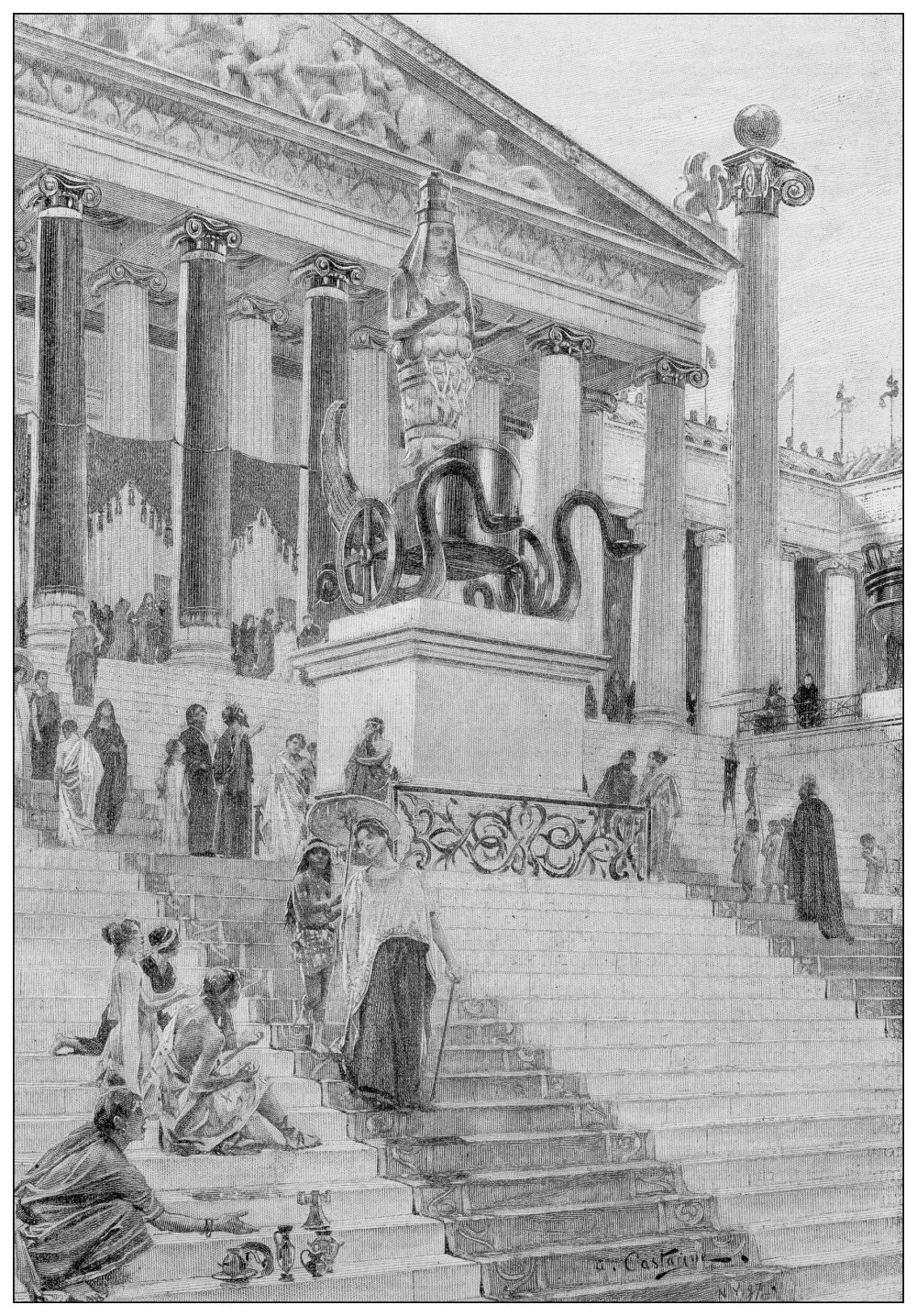
Seven Wonders of the Ancient World, Temple of Artemis at Ephesus/Getty images
Subsequently, she advised Xerxes to refrain from personally participating in the war against the Greeks and to delegate command to the general Mardonius: "If anything happens to Mardonius, it doesn't matter, and even if the Greeks defeat him, it won't be a victory, as they will only defeat your servant."i
Xerxes admired Artemisia's strategic thinking and was even willing to entrust her with his most valuable possessions—his sons. However, to properly appreciate her personal qualities, one needed to belong to a culture where a female warrior and politician were viewed not as an aberration but as a natural phenomenon. It is impossible to imagine a woman commanding Greek warships. Artemisia's role prompts reflection on the status of women among the tribes of Asia Minor.
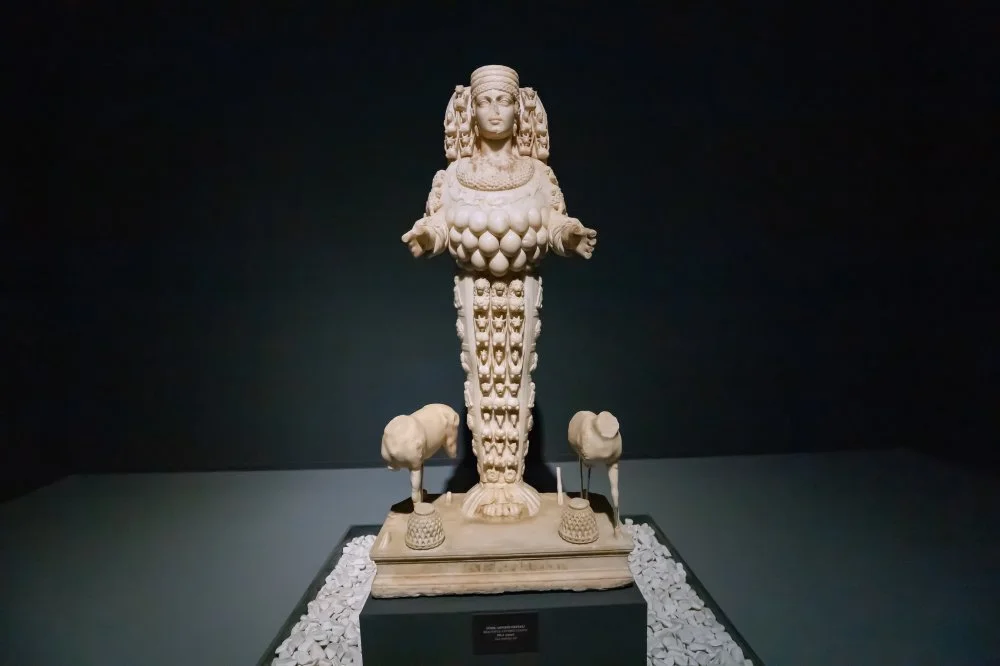
Artemis of Ephesus, 1 century AD/Shutterstock
Greek sources often attributed the founding of cities to the Amazons. But, these cities were actually established by peoples of the Hittite-Luwian linguistic group.i
However, archaeological evidence suggests that the city was founded by Hittites, Carians, and Leleges. These peoples' religions prominently featured the Mother Goddess, with women often holding key priestly roles. Additionally, Iranian tribes of the Eurasian steppes had contact with the peoples of Asia Minor. Perhaps the ancient authors were not entirely mistaken, and the nomadic steppe tribes indeed adopted some traditions from their southern Black Sea neighbors. Or perhaps they shared commonalities in social structure from the outset?

Johann Georg Platzer. Thalestris in the camp of Alexander the Great/ Wikimedia Commons
Regardless, during Xerxes' reign, local women still enjoyed significant rights. The Achaemenid Empire's downfall came in 331 BC when Alexander the Great's army defeated Darius III at the Battle of Gaugamela. Following Alexander's death, several states emerged in the former Persian Empire, ruled by military commanders from the Macedonian army. These regions experienced a cultural shift, embracing Greek customs and traditions. However, it seems the customs of Persian women remained largely unchanged.
The Last Amazons
Around 250 BC, a significant new state led by an ancient Iranian dynasty emerged on the southern shores of the Caspian Sea. This was the Parthian Empire, founded by the military leader Arsaces. In 2004, Iranian media reported a crucial discovery: DNA analysis indicated that a woman was buried in one of the military graves from the Parthian era. Unfortunately, the authenticity of this information cannot be verified. Numerous speculations and fakes on this topic have circulated on the internet for over ten years, including stories about "princesses" who supposedly commanded the Parthian army but, in fact, never existed.
By the 3rd century AD, the Parthian Empire was in decline, worn down by constant wars with Rome and internal conflicts. Meanwhile, in the ancient province of Pars, which gave Persia its name, a new political force emerged. Led by Ardashir, the grandson of Sasan, a descendant of an ancient priestly lineage, this force first seized power in Pars and then engaged in a struggle with the Parthian king himself. In April 224 AD, the rebel Ardashir achieved victory and laid the foundation for his own ruling dynasty—the Sassanids.
Sassanid Iran became a military-economic marvel of its time: within just a few years, the weakened and conflict-ridden state transformed into a truly great power. Even the mighty Romans hesitated to engage in conflict with the new Iranian king and exhibited remarkable diplomacy during negotiations.
However, avoiding a major war was impossible. Throughout its existence, the Sassanid dynasty fought with varying success against the Roman Empire and its successor, Byzantium. The history of these wars is well-documented in chronicles, and on their pages, mentions of women arise again—this time not semi-legendary but quite prosaic.
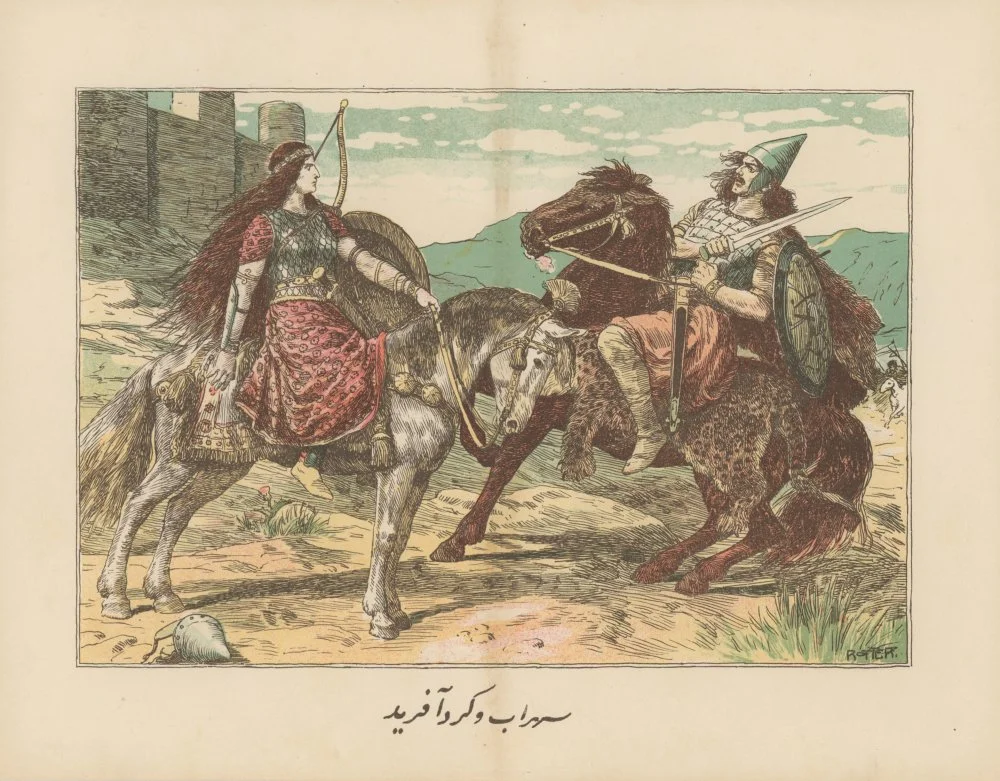
Joseph Rotter. Sohrab and Gordafarid/Wikimedia Commons
Byzantine chronicler John Zonaras recounts that in 260 AD, after the battle between the Romans and the Sassanid king Shapur I, the bodies of women dressed in men's clothingi
But What About the "Non-Men"?
If Iranian tribes of Eurasia granted women such freedom of expression, was there a similar social institution for men? If a woman (though not just any) could mount a warhorse and take up arms, could a man be retrained as a homemaker? This question may seem sarcastic, but apparently, such practices did exist. Describing the Scythians, Herodotus reports: "The Scythians have many soothsayers... The Enarees—men who are like women—say that the gift of prophecy has been granted to them by Aphrodite. They divine using a linden bark. This bark they cut into three parts, and they wind the strips around their fingers, and then they unroll them again, and in so doing, they make their predictions."
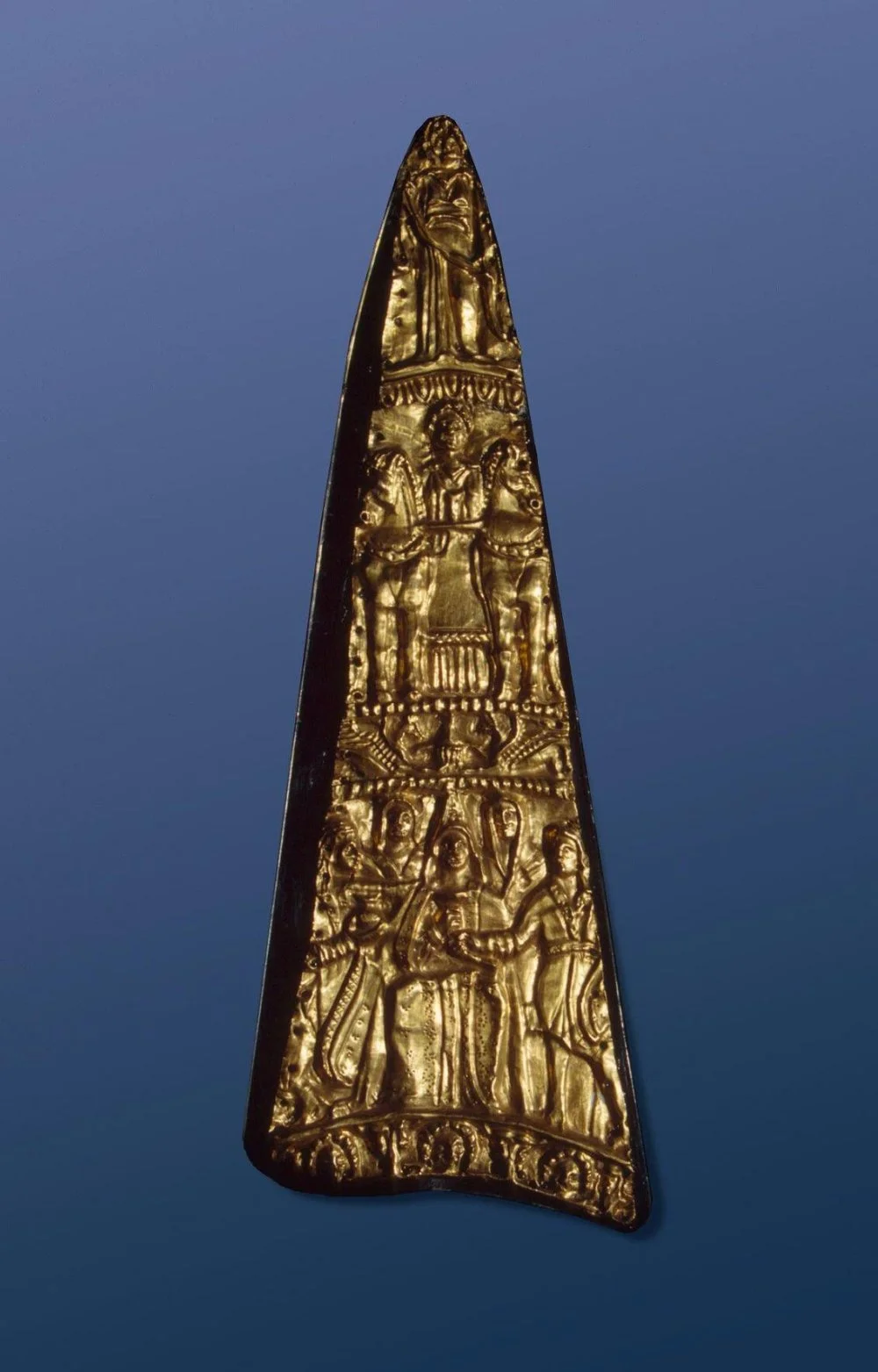
Scythian Karagodeuashkh Headdress Detail/Alamy
Pseudo-Hippocrates (traditionally associated with an important treatise on the Scythians, "On Airs, Waters, and Places," attributed to the renowned physician of the 5th–4th centuries BCE) provides a more precise transliteration of the Scythian word - anarii (ἀναριεῖς), which can be reconstructed as anarya, meaning "non-man."i


Scythians with horses under a tree. Gold belt plaque. Siberia, 4th-3rd century BCE. /The State Hermitage Museum, St Petersburg, 2017. Photo: V Terebenin/Wikimedia Commons
But if the soothsayers-enarees were considered "transformed into women," does this mean that the so-called Amazons were considered "transformed into men"? Perhaps their community also held a priestly status? These questions can only be answered with a vague "possibly." It's conceivable that numerous myths about temples and sanctuaries founded by the Amazons hint at their priestly function. It's also plausible that the legend claiming the Amazons supposedly cut or cauterized their breasts contains echoes of certain initiations, although there is no evidence to support this.
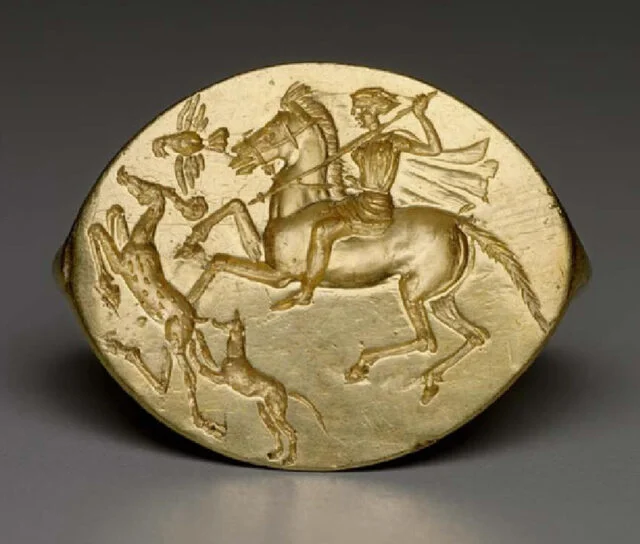
Gold ring depicting a deer hunt, 450-400 BCE. /Museum of Fine Arts, Boston/Wikimedia Commons
However, there is at least one historical figure who truly resembles a "shaman of the transformed gender," but she comes from another area of the Iranian world, the Kingdom of Pontus, located in the Southern Black Sea region. In 2004, a tombstone with a strange inscription was found on the Taman Peninsula: "Hypsicrates, wife of Mithridates Eupator Dionysus".i


A coin with a Mithridate/Wikimedia Commons
As a person from a different cultural background, the Roman attempted to explain the "strangeness" of the queen by her attachment to her husband, but in light of what we already know about the traditions of Iranian tribes, this explanation appears primitive. Apparently, Hypsocrates(ea), the granddaughter of a Sarmatian queen, underwent some initiation ritual into the "Amazons," and the ritual change of name to a male one emphasized her special social status. Contemporary research often endeavors to interpret these customs through the lens of gender theory, employing terms like "transgender" and "gender fluidity." However, the extent of their accuracy remains uncertain.
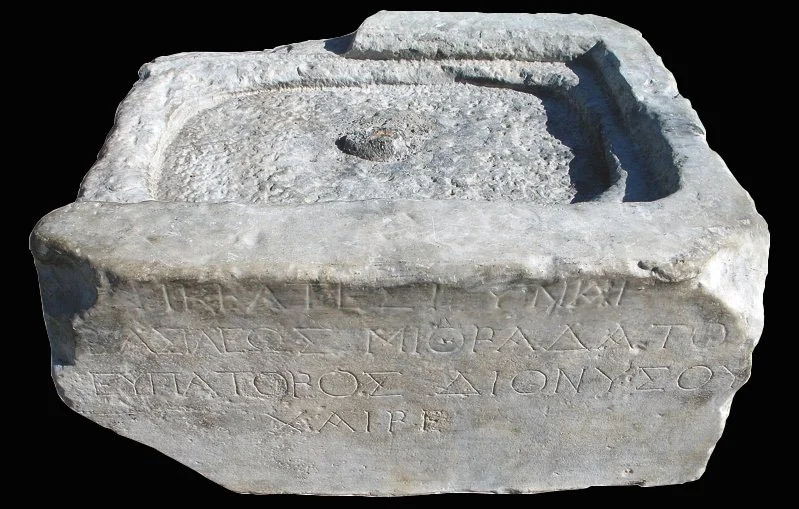
A pedestal with a carved name: Hypsicrates, wife of Mithridates Eupator Dionysus, farewell/Open sources
However, it's important to remember that ancient people didn't see themselves in that light. Their self-awareness wasn't shaped by what we now call "gender expression" and "self-identification." Religion held the most significant place in their value system: not individualistic desires, but tradition, symbol, and ritual. Human life was a continuous chain of initiations, rites, and transformations. A warrior who symbolically transformed into a totemic ancestor before battle — for instance, a wolf or a bear — and a priest who wore women's clothing weren't concerned about how others would perceive them. Instead, they focused on the mystical power they would gain and how their role in the cosmos would change.
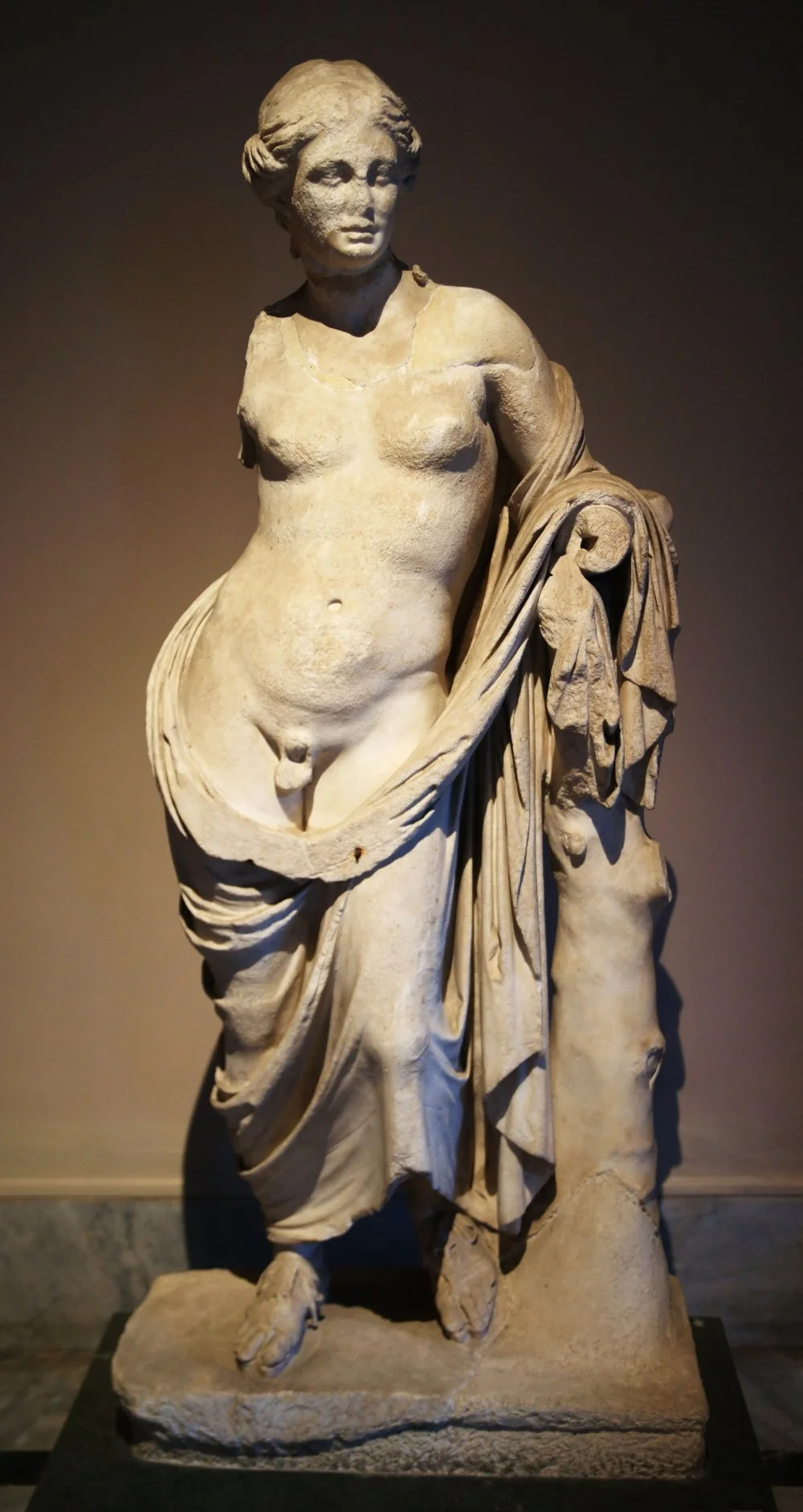
Hermaphroditus statue from Pergamum, Hellenistic, 3rd century BC (Istanbul)/Wikimedia Commons
New Chapter
There are truly no independent sciences. At each stage of human society's development, factors distort our perception of scientific data: political trends, stereotypes, prejudices, and false hopes. Pursuing trends harms the process of acquiring knowledge as much as conservative stubbornness. "Socially dangerous" topics, such as the issue of the Amazons, have suffered the most from our biases.
Some scholars vigorously ignore facts, while others fantasize unrestrainedly to fit the facts into their hypotheses. Finding objective and balanced research is not always easy. However, the volume of accumulated material is increasing. Thanks to technological progress, new methods are emerging that allow for extracting maximum information from archaeological finds. Not so long ago, gender determination of remains was based on conventional measurements, often with significant errors. Today, this can be done through genetic analysis, and the results are sometimes astonishing. For example, it was found that the Viking buried with rich weaponry and two horses in the famous grave Bj 581 in Birka (Sweden) was a woman.i
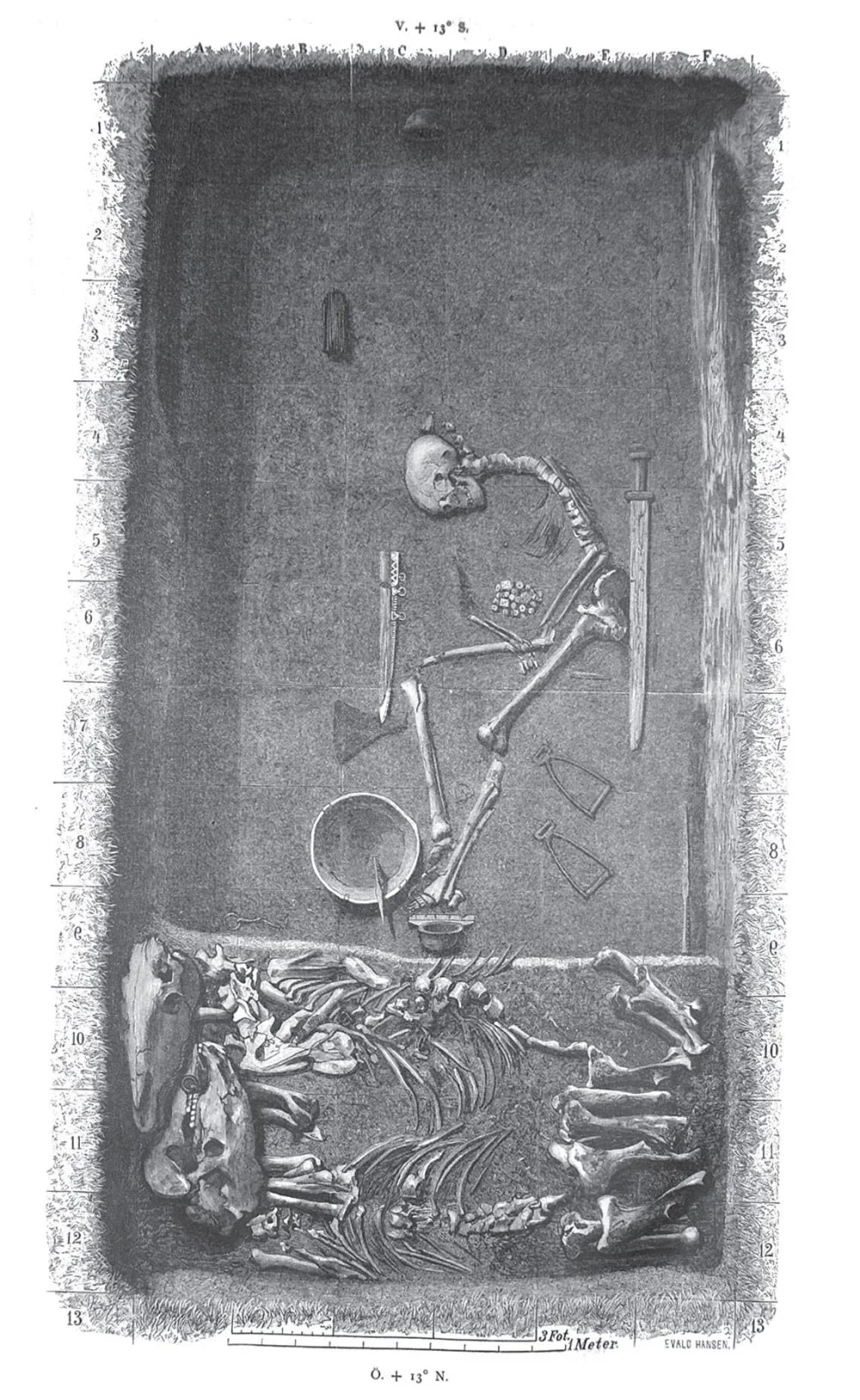
Birka, Sweden Viking grave Bj 581. 1889/Wikimedia Commons
The findings from excavations continue to expand our understanding and challenge outdated hypotheses more effectively than any critic. In 2019, at the Devitsa V burial site in the Middle Don region, archaeologists uncovered the burial of four Scythian women alongside various weapons and horse harnesses. One of them wore a golden headdress — a kalaf, indicating an exceptionally high, and most likely, even priestly status of the deceased. In the center of the tomb, clear traces of a bronze cauldron were found (the cauldron itself had been stolen by looters in ancient times). These cauldrons had a ritual purpose and were traditionally placed in the graves of wealthy Scythians. Archaeologists had long considered them to be exclusively male attributes, but after this recent discovery, it seems more fitting to replace the term "male" with "military," irrespective of gender.
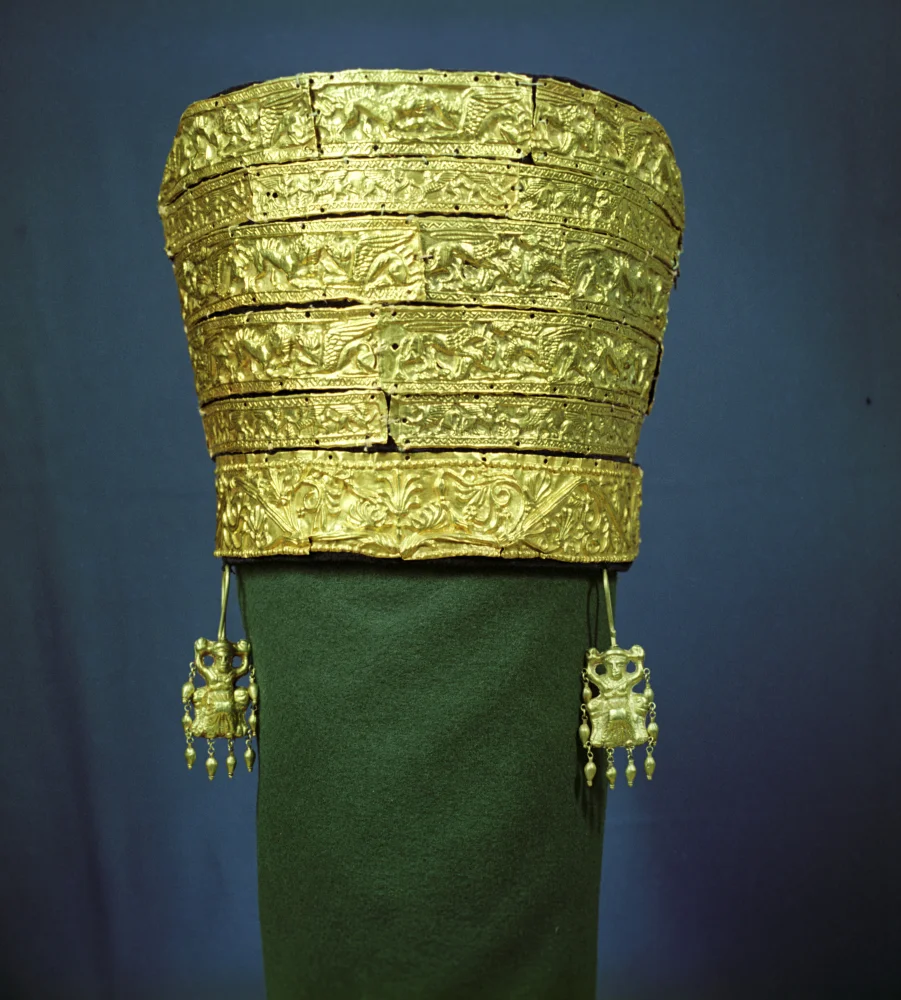
Scythian female headdress from the Tovsta Mohyla kurhan/ РИА Новости
The legend of the counterparts of the Amazons, feminine priestesses-enarees, also finds indirect confirmation.
In Scythian-Sarmatian burial sites, there are instances of male burials containing typically feminine tools and, at times, even women's cult attire. This does not mean that all accounts from ancient writers should be taken at face value. However, such discoveries certainly indicate that the social structure of Iranian-speaking tribes was much more intricate than previously thought. Gender did not dictate one's occupation, and religious beliefs may have allowed, or even mandated, transitioning between social groups. Some scholars interpret these findings as residual traces of matriarchy — a social structure where women held leadership roles. Yet, this perspective lacks sufficient evidence to be conclusive.
The boundless expanses of the steppe still harbor many secrets. Beneath the imposing mounds of burial sites and within the modest earthen graves lie nomads whose love for freedom impressed even the haughty Greeks. Even if the tales of the Amazons were purely fictional, devoid of any truth, they would still effectively embody the inner strength of the steppe peoples, their stern commitment to democracy, and their martial spirit. However, there are no myths that are entirely fabricated. To unravel their meaning, one must discern the reality interwoven within the myth — and this reality is structured in an even more intriguing manner than the most captivating myth.
